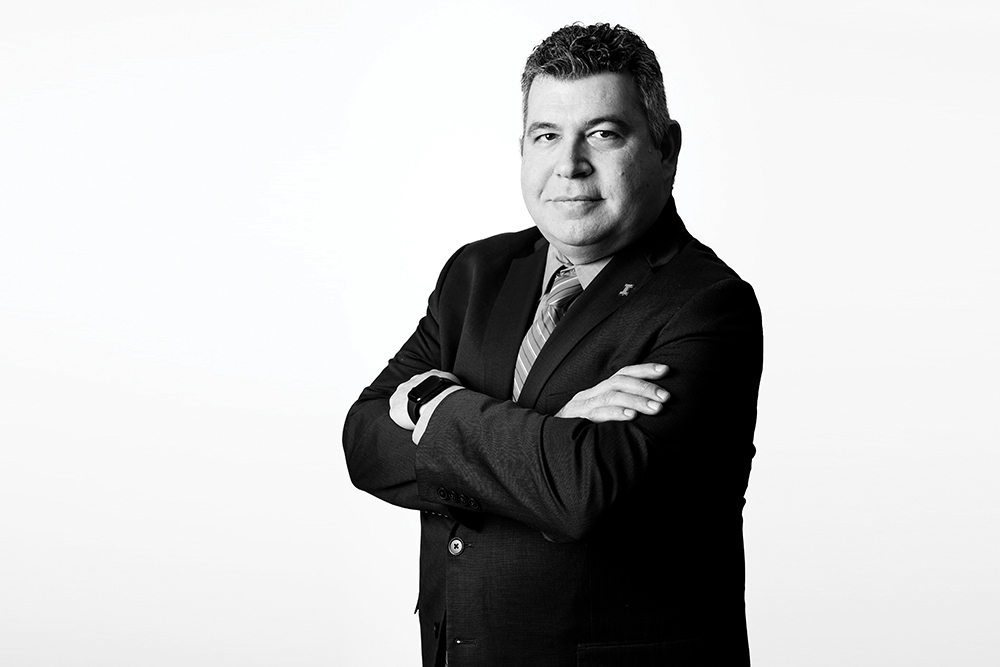This Rice University Professor Developed Cancer-Detection Technology
You’ll get treatment tailored to you—in the comfort of your own home.
 Professor MARK COHEN (Image by Fred Zwicky)), Dean of the Carle Illinois College of Medicine, and senior vice president and chief academic officer for Carle Health. Dr. Cohen, a physician-engineer who practices as a surgical oncologist and endocrine surgeon, came to Carle Illinois from the University of Michigan in May 2022. His research interests include engineering tissue to create organs from fat stem cells; creating new drug delivery methods; and improving telemedicine through mixed reality technologies.
Professor MARK COHEN (Image by Fred Zwicky)), Dean of the Carle Illinois College of Medicine, and senior vice president and chief academic officer for Carle Health. Dr. Cohen, a physician-engineer who practices as a surgical oncologist and endocrine surgeon, came to Carle Illinois from the University of Michigan in May 2022. His research interests include engineering tissue to create organs from fat stem cells; creating new drug delivery methods; and improving telemedicine through mixed reality technologies.
PRECISION MEDICINE, personalized medicine and tissue engineering are going to evolve incredibly in the next 20 to 50 years.
We’ll be able to recreate organs and regenerate parts of the body. We’ll do that all in the lab and engineer it, so you won’t need to be on immunosuppressive drugs for the rest of your life. We’ll also be able to diagnose diseases genetically years before they ever manifest and give you treatments, so you never get sick.
Around drugs and therapies, we’re going to have a much wider selection, precise for each person. We’ll tailor drugs to treat your tumor in exactly the way it develops or cure your disease in a way that’s unique for what you need.
We’re also doing a lot of great research around the future of medicine, using augmented reality and virtual reality. Virtual reality is where you put on a headset and everything you see is within a virtual world. Augmented reality, meanwhile, uses holographic images, which are added into the real world, bringing in more data and visuals.
We’re using these tools to teach procedures and skills to medical students. They’re also enabling us to collaborate across great distances. We can use telemedicine more effectively and help clinicians make better decisions.
People might use home-based devices or tools that can be worn on their wrists to get updates on their health.
In the future, you’ll be in the comfort of your own home and a physician of any specialty will come into your environment as a holographic image. They’ll go through your history and symptoms, and make your diagnosis. You’ll be able to have testing done without going to a hospital.
As technology breaks down physical and social barriers, access to care will improve. For example, people in remote rural or underserved areas will get quality care in their homes. Experts from anywhere in the world will come to their bedside.
We’ll also have more opportunities to provide education and monitoring remotely. People might use home-based devices or tools that can be worn on their wrists to get updates on their health. You’ll be a full participant in your health journey.
As we improve access and treat disease earlier, people will live longer. Of course, new problems will come up. But we learned from the pandemic that we can be more collaborative and nimbler when we need to.
The biggest challenges involve bringing industry, government and academia together more easily. We need to learn how to expand solutions from one area to another, decrease costs, and create more access to important treatments and therapies. All of that will be essential to achieve this new, improved future of health care.
In the College of Medicine, we’re leading the charge to collaboratively solve bigger problems in health. We’re creating a new Global Consortium of Innovation and Engineering in Medicine this year, which is bringing together over 30 medical schools, companies, and government agencies to create a new global network that will advance medical education and accelerate medical innovations to address global health challenges more effectively. This will move solutions developed here in Urbana-Champaign to the world.
We also have a unique opportunity to train more physician-innovators, teaching them how to keep the patient at the center of their efforts as they bring technology and innovation into compassionate care. —BY CINDY KUZMA
This is an article from Illinois Alumni Magazine. Re-posted by VISHC News. The original post can be found here: